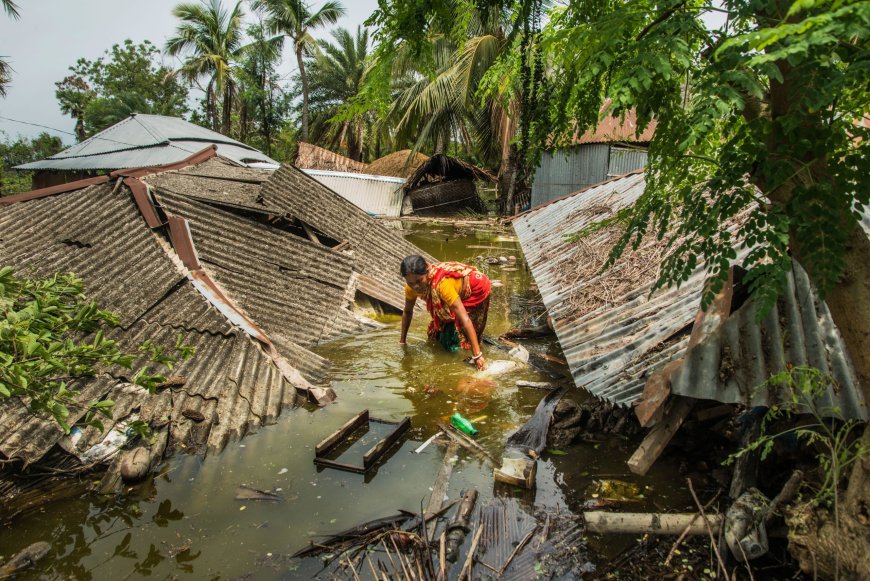Asia world's most 'disaster hit' region with rising climate crisis: Report

A REPORT by the World Meteorological Organisation (WMO) has again called Asia as the world's most "disaster-hit" region in 2023, citing casualties and economic losses due to floods, storms, and heat waves.
‘State of the Climate in Asia – 2023’ said in India, severe heat waves in April and June led to some 110 fatalities.
“The report's conclusions are sobering," said WMO Secretary-General Celeste Saulo.
Many Asian countries experienced their hottest year on record in 2023, accompanied by a multitude of extreme conditions, including droughts, heat waves, floods, and storms.
"Climate change exacerbated the frequency and severity of such events, profoundly impacting societies, economies, and, most importantly, human lives and the environment that we live in,” Saulo said.
Floods and storms in Asia
As many as 79 disasters linked to “hydro-meteorological hazards” struck Asia in 2023, predominantly floods and storms. Such disasters accounted for over 80 per cent of total and claimed more than 2,000 lives while affecting nine million people. The annual mean near-surface temperature over Asia was the second highest on record, with Japan and Kazakhstan experiencing record warm years.
“Yet again, in 2023, vulnerable countries were disproportionately impacted. For example, tropical cyclone Mocha, the strongest cyclone in the Bay of Bengal in the last decade, hit Bangladesh and Myanmar. Early warning and better preparedness saved thousands of lives,” said Armida Salsiah Alisjahbana, Executive Secretary of the Economic and Social Commission for Asia and the Pacific (ESCAP).
Marine heat waves were observed in the Arctic Ocean, eastern Arabian Sea, and northern Pacific, lasting three to five months, while the formation of 17 named tropical cyclones impacted countries such as China, Japan, the Philippines, and the Republic of Korea.
Extreme weather event in India
In India, severe heat waves in April and June led to some 110 fatalities due to heatstroke. Southeast Asia witnessed a major and prolonged heat wave in April and May, resulting in record-breaking temperatures. Parts of several regions, including southwest China, the Hindu Kush, and the Himalayas, reported below-normal precipitation, exacerbating drought conditions.
The report also highlighted significant flooding events in India, Pakistan, Nepal, and Russia, where catastrophic flooding affected about 40,000 hectares of rural land. Moreover, the high-mountain Asia region, encompassing the Tibetan Plateau, experienced continued glacier retreat and mass loss, with 20 out of 22 observed glaciers showing ongoing decline.
Challenges and opportunities to combating climate change
The report outlined regional disparities in climate services, with approximately 80 per cent of WMO members providing support for disaster risk reduction activities. However, less than 50 per cent of members offer "tailored climate projections" which are essential for informed decision-making and risk management.
